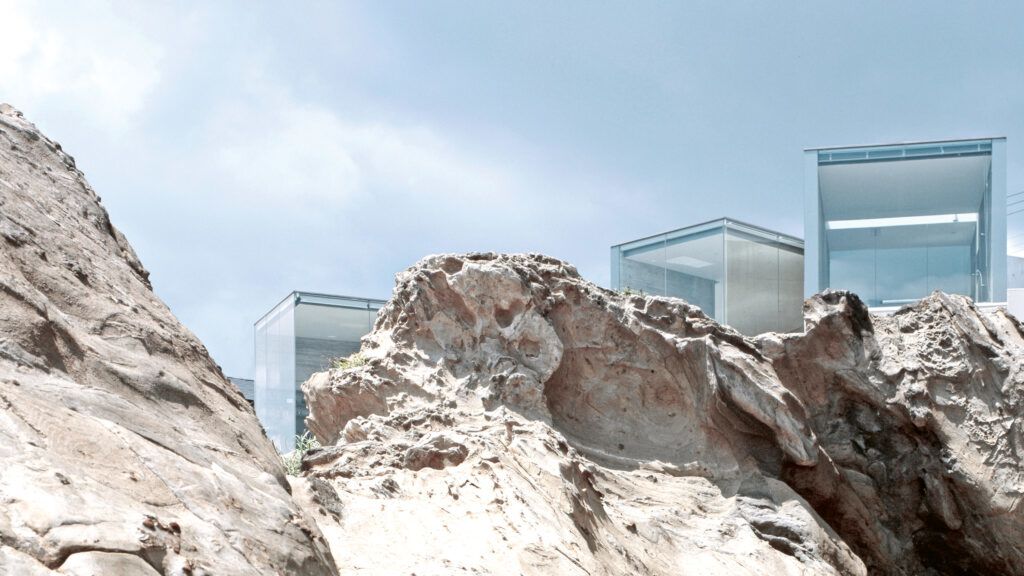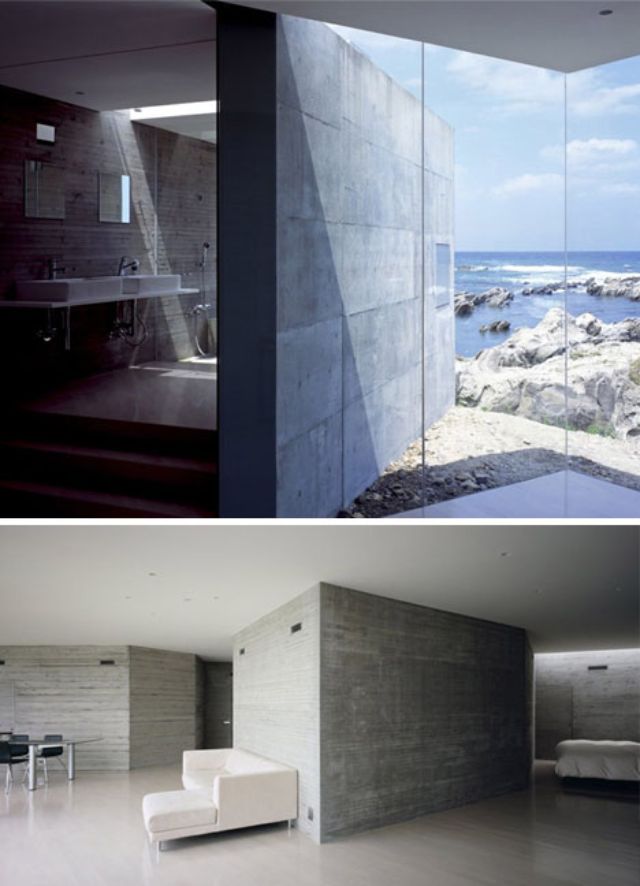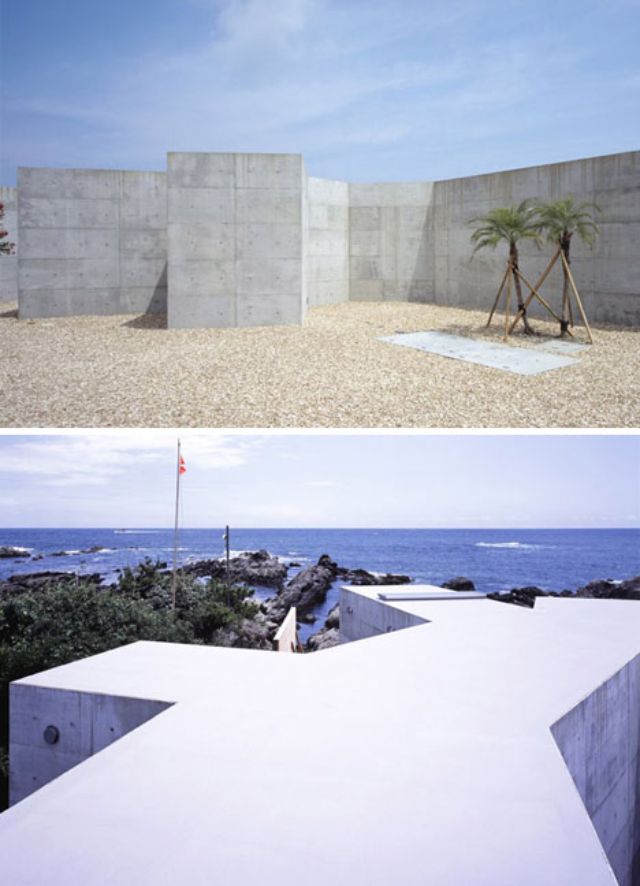Puzzle Property: How to Build a Home Without Inside Walls

How do you build a home without interior walls? Just as Japanese architect Sou Fujimoto. There is something monumental and elemental about this materially-simple, ocean-side dwelling, which wraps, twists and bends to create spaces without the need for distinct, stand-alone interior partition walls.

Sou Fujimoto designed House O around client desires: they wanted their Pacific Ocean residence outside of Tokyo to engage its surroundings, but also remain relatively open in plan. The first goal was accomplished with many angles of view and floor-to-ceiling windows – the latter, however, shaped this unique house even more fundamentally.

Board-formed concrete on the outside and stacked wooden slats on the inside trace angular kinks in straight walls, deforming to accommodate partial rooms and create both divisions and connections within the building.

Outside, the stone-gray surfaces stand out as rectilinear anomalies in the landscape, but the shapes and materials also begin to blend with the organic rough-rough cliff in a way that is surprisingly contextual at the same time.
More info from the architect
“Facing the Pacific Ocean, on a rocky stretch southeast of Tokyo, House O twists to face the sea and frame different views. The uniqueness of its floor plan, conceived as the branches of a tree, is its spatial continuity. All the spaces – entrance, living room, dining room, kitchen, bedroom, Japanese style room, studio, and bathroom – are arranged without partitions.”
“The client wanted a house where the presence of the ocean could be felt. Under this premise, the project searched for different forms of approximation: a panoramic image, the vision one would have from the interior of a cave, a limited frame, and a space projected over the water. In this way, when one moves through the house they gradually discover and find those diverse ocean views.”
“The relationship of the inhabitant and the sea is not the same from the living room, the bedroom, or the bathroom. One could say, therefore, that the experience of the house is similar to that of taking a walk along the coast: at certain moments one gets a panoramic view; at others, it is only possible to see the ocean from recesses of a cave. And this walk would be marked with pleasant places in which to sit and enjoy, which provided the initial images of the project.”




